Like many New York transplants, Jennifer Lee has figured out how to make a space work for all her needs. In her 2 bedroom apartment, she’s managed to turn it into a live space, studio space, and gallery space with her gallery window, Sister. is Jennifer’s latest curatorial project where she displays fellow artists’ work in a small gallery-like box against her window. From outside, the bright and clean display is like a beacon on the street, inviting passerby’s to investigate closer. The work displayed is always interesting and brings great insight to what Jennifer is thinking about as curator and as artist.
As an artist, Jennifer ties in ‘bad humor’ through the use of found material and working on top of it with an almost academic execution. She appropriates these different vocabularies like inkjet printouts and cartoons found online, and combining them in the work. At first, these different vocabularies seem haphazard but on closer inspection the work is extremely meticulous and specific. Jennifer’s work talks about proficiency and brings about a sense of nostalgia by her use of appropriating these high school drawing aesthetics and twisting it with a bad joke.
Jennifer Lee is an artist living and working in Bushwick, Brooklyn and you can take a look at her Sister window project across the street from the Maria Hernandez Park off the Jefferson L stop. featuring the work of Daniel Fairbanks is currently on view until May 17th at Sister.

F: Can you talk about your process?
J: My process is varied in terms of how it starts out. Sometimes its how something is going to look, sometimes it starts with the object itself. I always try to find humor in my work. It gives me a sense of perspective and a clear way to understand the relationship between art making and the way it is received. One of my early pieces I did in high school was this bad pastel drawing of Dr. Kevorkian. It was kind of accidental in that it ended up looking like a joke, but there was this light around his face that made him look god-like, and doing the portrait in pastels made this association more clear. It wasn’t meant to be irreverent towards him but for me, it ended up being pretty funny. I do love bad jokes!! I guess you could say that cliches enforce a type of complacency and working with the obvious “bad-joke” type of material you are dealing with that complacency in some way, or at least calling attention to it.
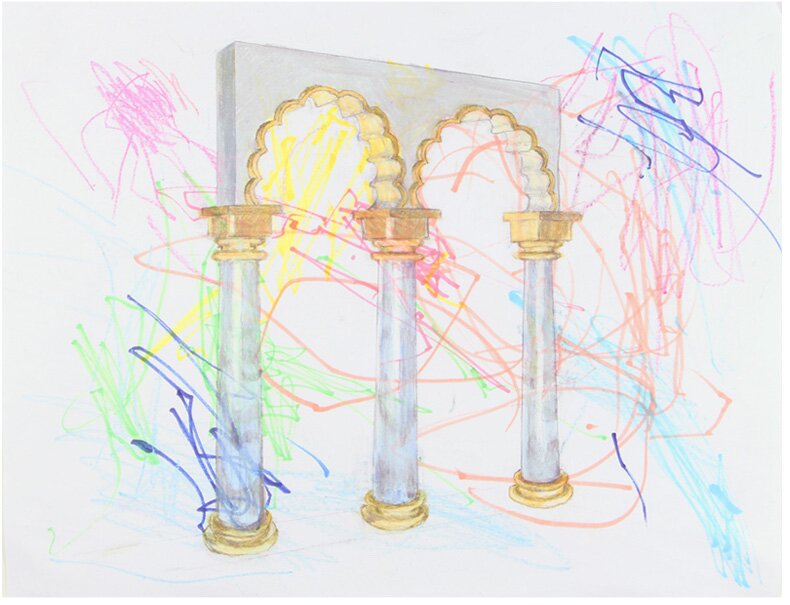



Image courtesy of the Artist
F: Your work is very meticulously and academically done but at the same time, you’re appropriating objects such as cardboard from a cat food dispenser and giving it the same amount of importance. Can you talk about that relationship?
J: I wouldn’t say that I consciously affect an academic style, more that I am trying to paint neutrally, which I guess has that kind of history to it. Although I will say that I think academia was something to rebel against in the early part of modernism, then it went back to academia i.e. Baldessari style in the late 60s, so maybe I feel like we have had an “academic moment” in this stage of art history. It is hardly as defined as that for me though; like if i find something peculiar at a thrift store, or on the internet, then I might want to add to it or accentuate its weirdness via superimposition. Like the cat food dispenser juxtaposed with a medieval video game image, I really have no idea what the relationship means, but it struck me as I was culling images alongside this cat-box and it seems to work intuitively. As far as the tightness in my work, again I strive for a neutral style, but also enjoy the contradiction in appropriating or collaging an image “by hand”, like it would be so much easier to just stick the photo on the box or silk screen it or something but it gains a humanness that I think has more potential for comedy.
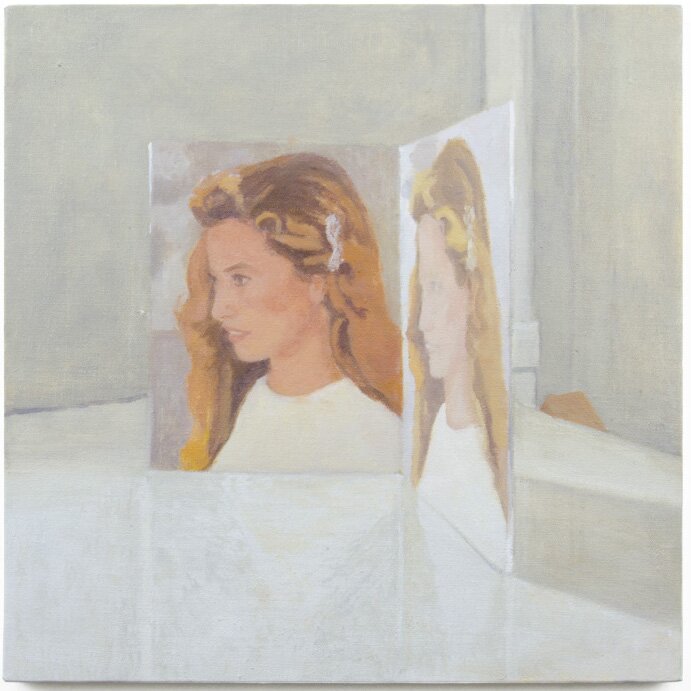

F: Where are you finding your references from?
J: I’ll take materials from anywhere really but I love searching at thrift stores for bric-a-brac and of course random google searching.
F: Can you talk about your live/work space?
J: I live in a two bedroom apartment that I share with my partner Zuriel Waters who is also an artist. We sleep in the living room and use the two bedrooms as separate workspaces. We have lived here for about 5 years, we moved to NYC after grad school in 2010 and this was our first apartment.
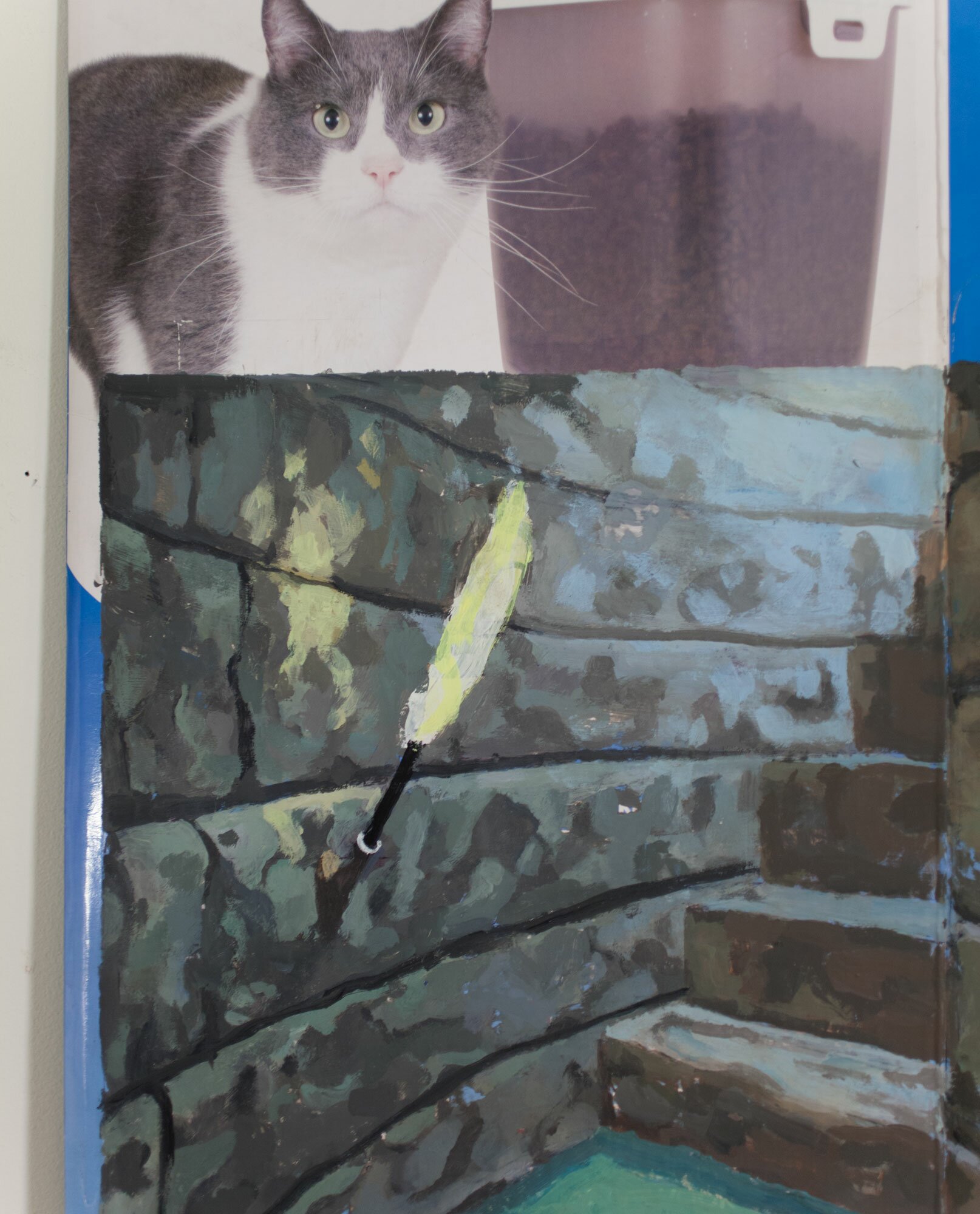

F:Can you talk about your ‘Sister’ window space gallery?
J: lives in my studio window which is ground level and facing the street. It is on the corner of Starr and Irving in Bushwick. At 5pm (4pm in the winter) we have a light that turns on which is technically when the gallery opens. At night the window lights up and the artwork becomes very easy to see and illuminates the street almost like a beacon. The physical gallery space is remade for each project but the window itself is about 30” square, so obviously the work we show has to be pretty small. Because of this the shows end up being more collaborative and site-specific. Also that means we are limited in terms of what we can show (small things) but on the other hand we can very easily do projects with artists that live far away since the shipping is so affordable.

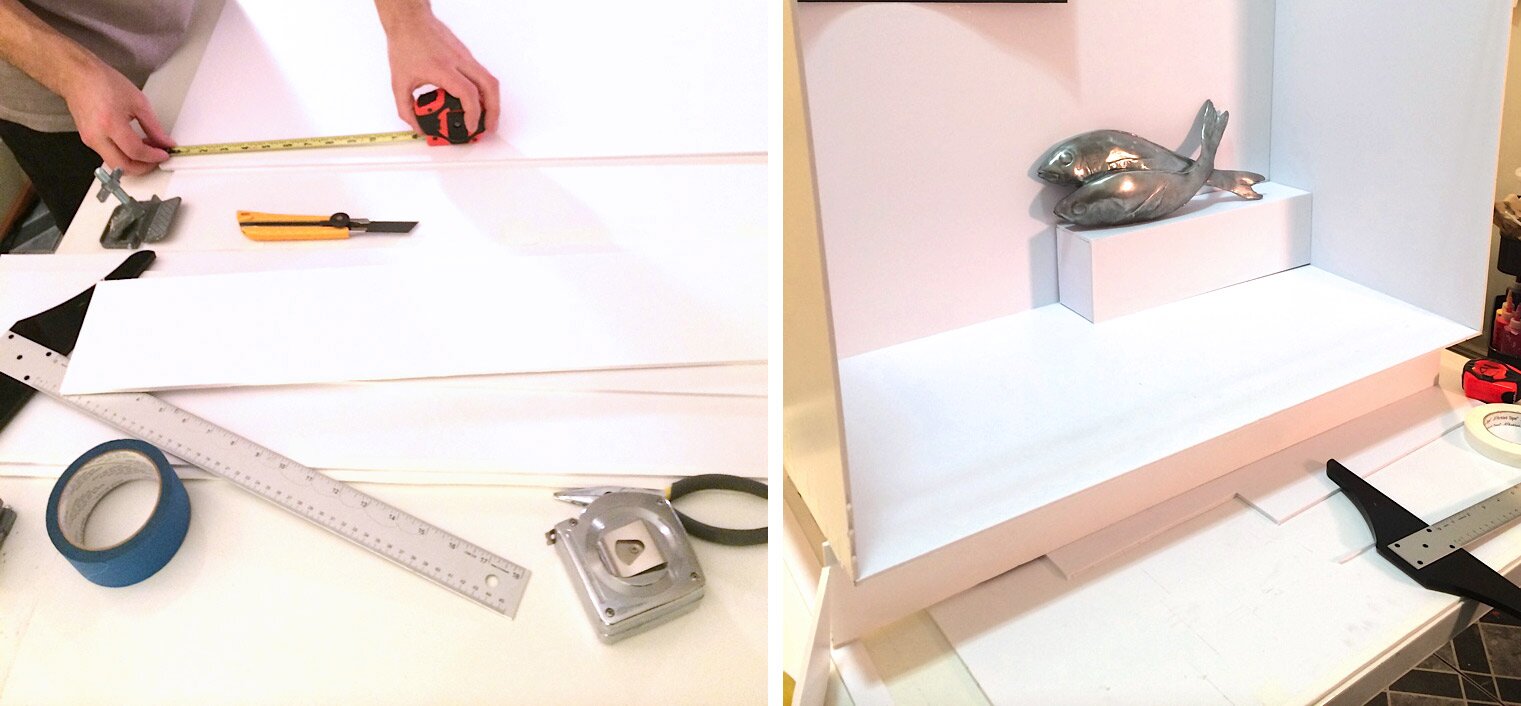
F: How does this project relate to your own work?
J: I think that the first impulse for me to make Sister was actually humor, the old ‘NY real estate is so expensive we could rent out our window’ thing; like it could be a new yorker cartoon or something. Now it has become much more than that but the absurdity about it is still there which is important. More importantly though is the act of collaborating and connecting with other artists which is a really enriching experience. The fact that I can go on with Sister really without anyone’s permission and that I can offer shows to people who I think deserve them is amazing and genuinely uplifting!


F: The idea of a window is to look out of and instead, your ‘Sister’ window gallery project is allowing people on the street to look in. Can you talk about how this idea came about?
J: My neighbor a few windows down started putting things in his window like an Elvis bust, and I always thought it was a funny idea, and impressed at how actually visible it was as a thing. I thought that it would be conceivable that a small space lit up with some of the signifiers of a gallery could possibly exist in a way if it took itself seriously enough.

F: You personally don’t get to see and interact with your window project works. Do you keep these pieces in mind when you work or do you consider it a separate entity?
J: I do consider them separate when i am in my studio, only because there is a glowing box in my window that feels more like a giant lamp. But every month I have to start preparing for the next show which does take a lot of studio time.

F: How do you choose and curate the work that goes into the window gallery?
J: Well the project sort of originated with conversations I had been having with my friends Terry Young and Christina Fisher who were the first two shows. Not all artists would be interested or have a flexible enough practice for the window so whenever we see something that would work we try to pursue it. So far we have shows lined up through the end of the year including Peter Wilson, Lisa Cobbe, Faith La Rocque and Cooper Holoweski who are all people that we happen to know socially or through school, but we are not opposed to submissions either.
F: Can you share the response you’ve been receiving with this project?
J: All the responses so far have been great, especially from my landlord’s mother ![]()

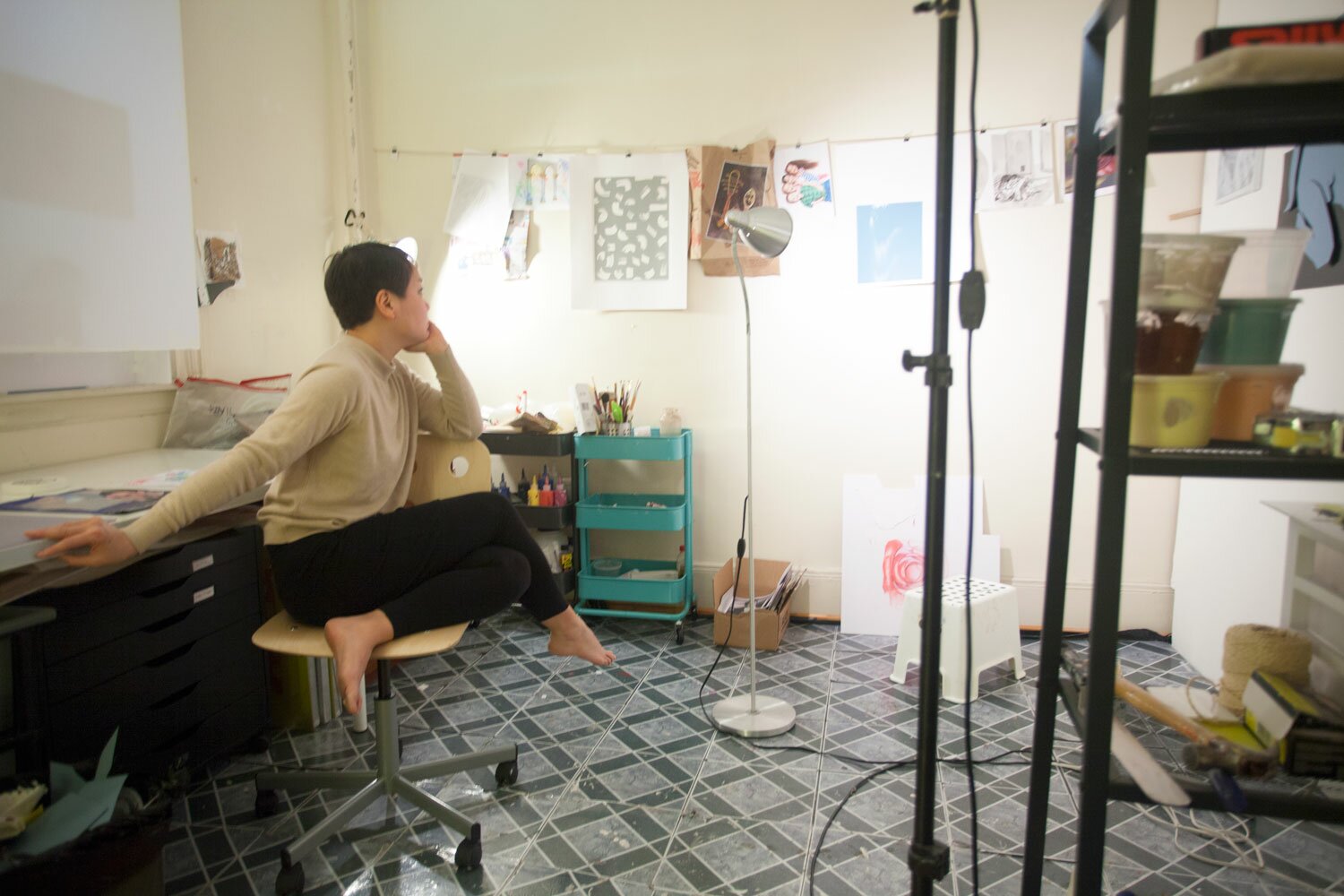
You can see more of Jennifer Lee’s work at and learn more about Sister at




